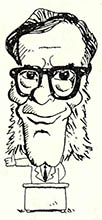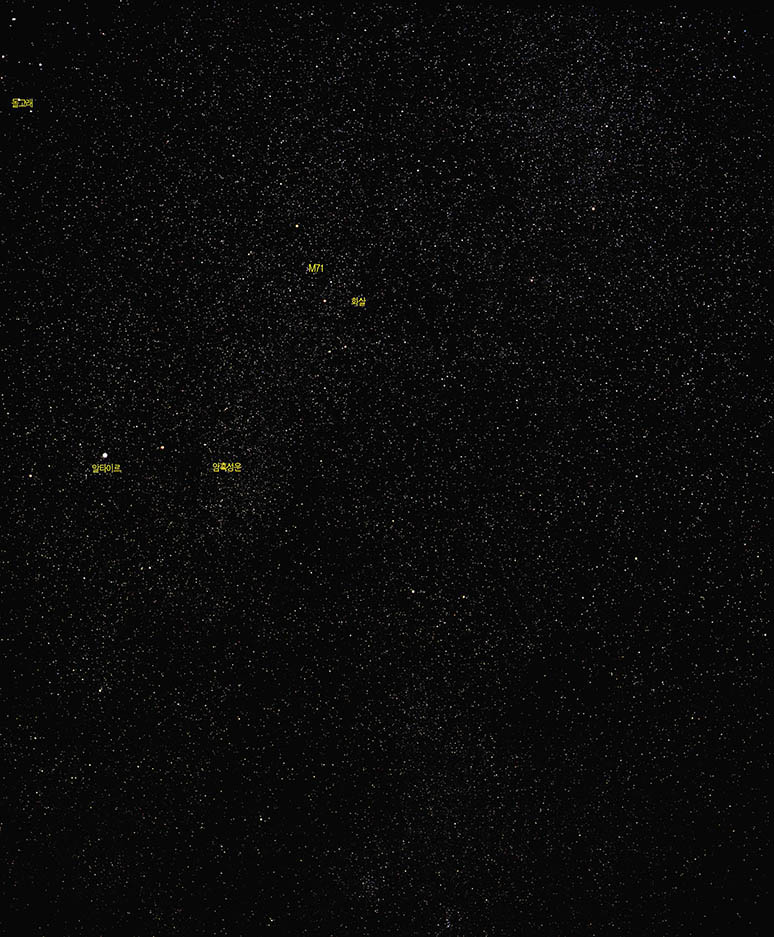
서기 1800년, 박제된 동물 한 마리가 새로이 발견된 신대륙 오스트레일리아로부터 영국으로 실려왔다. 오스트레일리아는 이미 구대륙에서는 찾아볼 수 없는 독특한 식물과 동물들의 원산지로 인식되어 왔지만 이번만큼은 정말 희한한 것이었다. 이 박제된 동물은 약 2피트의 키에 털이 가득했다. 탄력성있는 납작한 부리에 물갈퀴가 있는 발들과 넓고 넙적한 꼬리에다가 뒷다리엔 독을 분비하기 위한 것으로 보이는 며느리발톱까지 갖고 있었다. 뿐만 아니라 꼬리밑에는 구멍이 하나 있었다.
영국의 동물학자들은 그만 화를 내고 말았다. 장난이 지나쳐도 너무 지나친 것이었다. 그들 생각엔 호주의 버릇없는 친구들이 여러 동물들의 부분을 꿰 맞추어 순진한 학자들을 놀리려는 것이 분명했기 때문이다.
그러나 그 박제에는 억지로 꿰맨 흔적이 없었다. 따라서 점점 시간이 흐른 후에는 동물학자들도 이것이 새로운 생명체라고 인정했다. 이제 이 동물은 과학용어로는 '오르니토린쿠스 파라독시칼(새부리 파라독시칼)'이라 불린다. 그러나 일반인들에겐 '오리너구리'로 알려져 있다.(플래티푸스는 '평평한 발'이란 뜻이다).
오리너구리는 틀림없는 포유동물로 생각됐다. 몸에 가득한 털이 충분한 이유가 됐다. 그런 털은 포유동물만 갖는 것이었다. 그런데 이 동물은 알을 낳는 것처럼 보였고 알 낳는 구조는 파충류와 매우 유사했다.
그러다가 1884년에 이르러서야 비로소 정말 알을 낳는 털많은 동물이 발견됐다. 이런 유형의 동물에는 역시 호주나 뉴기니가 원산지인 가시 돋친 개미핥기가 포함된다. (이와같이 알 낳는 포유동물은 구멍이 하나라고 해서 '일혈류'라고 불린다.)
20세기에 들어서면서 오리너구리의 실제 생활이 구체적으로 알려지기 시작했다. 이 동물은 소금기없는 담수에서 산다. 이름이 오리너구리라고 해서 오리와 같은 것은 전혀 아니다. 콧구멍의 위치도 다를 뿐더러 오리 부리처럼 딱딱하지 않은 탄력성있는 구조로 되어 있다.
오리너구리가 서식하는 물은 밑바닥이 예외없이 진흙인데 바로 이 진흙에서 먹이를 구한다. 약한 전류를 감지할 수 있는 능력이 먹이 찾는데 도움이 되기도 한다.
알을 낳을 때가 되면 암 오리너구리는 특별한 굴을 파고 조심스럽게 이곳을 풀로 채워 놓는다. 그런다음 직경이 4분의3인치 가량되는 크기의 딱딱하고 반투명한 껍질을 가진 알을 두개 낳는다.
엄마 오리너구리는 낳은 알들을 꼬리와 복부사이에 품고 몸을 웅크린다. 새끼가 알에서 깨어나오려면 2주가 소요된다. 알을 깨고 나온 새끼 오리너구리의 입엔 이가 있고 짧은 부리가 있으며 젖을 먹고 자라게 된다. 엄마오리너구리의 몸에 젖꼭지가 있는 것은 아니지만 젖이 복부에 있는 작은 구멍들로부터 흘러나오고 새끼들은 이 젖을 핥아먹음으로써 영양분을 섭취하는 것이다. 이 새끼들은 자라면서 부리가 커지고 이는 빠지게 된다.
그러나 이토록 오리너구리에 대해 많은 사실을 깨달았음에도 불구하고 동물학자들에겐 해결하지 못한 의문이 남아있다. 다름아니라 이 오리너구리가 파충류의 특성을 지닌 포유동물인가. 아니면 포유동물의 특성을 지닌 파충류인가 하는 점이다.
생존하는 오리너구리로는 답할 길이 없지만 과거로 돌아간다면 어떨까? 여러 유형의 동물화석을 가지고 있지만 이들은 대부분 뼈와 이를 가진 화석들이다. 화석으로부터 무슨 판단을 끌어낼 수는 없을까?
우선, 모든 살아 숨쉬는 파충류는 무릎 바로 윗부분이 지면과 수평을 이루도록 다리를 뻗친다. 그러나 모든 포유동물들은 다리가 땅에 닿도록 수직형태로 뻗는다. 또한 파충류의 이빨들은 모두 비슷한 모양인 반면 포유동물의 이는 날카로운 앞니와 납작한 어금니, 그 사이에 송곳니가 있는 등 각기 생김새가 다르다.
한편 '테랍시드'의 화석은 수직형다리와 각기 생김새가 다른 치아가 있음에도 불구하고 의문의 여지가 없이 파충류로 알려져있다. 이건 또 왜일까?
그 이유는 파충류와 포유류 사이에 또 다른 차이가 있기 때문이다. 살아있는 모든 포유동물의 아래턱 뼈는 하나다. 그런데 파충류의 턱은 여러개의 뼈로 구성돼 있다. 테랍시드의 아래턱은 일곱개로 구성돼 있다.
그러나 이 일곱개 중 하나는 매우 크다. 다른 여섯은 매우 작고 턱의 뒷부분에 비좁게 자리잡고 있다. 따라서 테랍시드는 포유동물로 매우 근접하게 진화되어간 파충류처럼 보인다.
포유동물은 입천장이 있어 들이마신 공기가 폐로 들어갈 수 있도록 되어있다. 이것은 음식물을 삼킬 때 필요한 1~2초 동안을 제외하고는 호흡이 끊어지지 않는다는 것을 의미한다. 파충류는 변온동물인 까닭에 산소의 지속적인 공급을 필요로 하지 않아 그와같은 입천장이 없다.
그런데 후에 발견된 테랍시드는 입천장이 있는 항온동물이었으며 심지어는 모피까지 가졌던 것으로 짐작된다. 포유동물이 거의 다 된 듯한데 지금은 멸종되어 버렸다. 현재 살아있는 테랍시드는 완벽하게 포유동물의 특성을 지녔으며 사실 포유동물로 분류된다.
그러나 아직도 오리너구리와 가시돋친 개미핥기는 의문으로 남아있다.
퀸스대학의 질스 매킨타이어씨는 동물의 3차신경에 관해 연구하고 있다.
모든 포유동물의 3차신경은 특별한 뼈를 하나 타고 흐른다. 그런데 파충류의 경우엔 두뼈 사이로 흐른다. 융합되기 전의 어린 오리너구리의 뼈를 관찰하면 3차신경이 뼈들 사이로 흐르고 있다. 따라서 매킨타이어씨는 오리너구리가 파충류라고 믿는다.
그러나 논쟁은 계속될 것이다.
Science Commentary
In 1800, a stuffed animal arrived in England from the newly discovered continent of Australia. The continent had already been the source of plants and animals never before seen-but this one was ridiculous. It was nearly 2 feet long and had a dense coating of hair. It also had a flat rubbery bill, webbed feet, a broad flat tail and a spur on each hind ankle that was clearly intended to secrete poison. What's more, under the tail was a single opening.
Zoologists exploded in anger. It was a stupid practical joke. Some unfunny jokester in Australia had stitched together parts of widely different creatures in order to make fools of innocent zoologists.
There was, however, no sign of artificial joining. Slowly, after decades, zoologists agreed they had a new creature. Its scientific name is "Ornithorhynchus paradoxical" (birdbeak, paradoxical). To the general public, however, it became the "duckbill platypus" (platypus meaning "flat feet").
It seemed to be a mammal all right. The dense coat of hair was sufficient. Only mammals have hair. However, it did seem to lay eggs and the egg-laying machinery was very like that of reptiles.
It wasn't till 1884, however, that the actual eggs laid by a creature with hair were found. Such creatures included the spiny anteater, another native of Australia and New Guinea.(Such egg-laying mammals were called "monotremes"(One-hole).)
It wasn't till the 20th Century that the intimate life of the platypus came to be known. It is an aquatic animal, living in fresh water. The bill of the duckbill is really nothing like a duck's. The nostrils are located differently and it is a rubbery structure rather than a horny one like the duck's.
The water in which the duckbill lives is invariably muddy at the bottom and it is in this mud that the duckbill roots for its food supply, It can also detect weak electric currents, which help it find its prey.
When the time comes for the female platypus to produce young, she builds a special burrow, which she lines with grass and carefully plugs. She then lays two eggs each about three-quarters of an inch in diameter and surrounded by a translucent horny shell.
The mothor platypus places her eggs between her tail and abdomen and curls up about them. It takes two weeks for the young to hatch out. The newborn duckbills have teeth and very short bills and feed on milk. The mother has no nipples, but milk oozes out of pore openings in the abdomen and the young lick at these and are nourished in this way. As they grow, their bills become larger and their teeth fall out.
Yet despite everything zoologists learned about the duckbills there still remained the question: Are they mammals with reptilian characteristics or reptiles with mammalian characeteristics?
We can't tell from the living creatures, but what about the past? We have fossils of various animals but these fossils consist mostly of bones and teeth. Could anything be judged from this?
Well, all living reptiles have their legs splayed out so that the upper part just above the knee is horizontal. All mammals, on the other hand, have legs that are vertical all the way down. Again reptiles tend to have teeth that all look alike while the teeth in mammals are differentiated, with sharp incisors in front, flat molars in back and conical teeth in between.
As a matter of fact, there is a fossil called a "therapsid" that has vertical legs and differentiated teeth, but is considered without a doubt to be a reptile. Why is that?
Because there are other differences. In all living mammals, the lower jaw consists of a single bone, Ine reptiles it is made up of a number of bones. The therapsid's lower jaw is made up of seven bones.
However, one of the therapsid bones is very large. The other six are small things, crowded into the rear angle of the jaw. It would seem then that the therapsid is a reptile that is very much on the way to becoming a mammal.
Mammals have a palate so that inhaled air is led over it to the lungs. This means that breathing is not interrupted except for a second or two during swallowing. Reptiles don't have this palate because, being cold-blooded, they don't need a steady supply of oxygen.
Some of the later therapsids do have a palate, which seems to indicate warm-bloodedness and perhaps even a hairy pelt. They are well on their way to mammalianhood, but they are all extinct. The only therapsids that are alive are those that have developed full mammalian characteristics, and are mammals.
But that still leaves the duckbill platypus and the spiny anteater.
Giles T. Maclntyre of Queens College studies the trigeminal nerve. In all mammals the nerve passes through a particular bone. In reptiles, it passes between two bones. In young duckbills where the bones of the skull have not fused, the trigeminal nerve passes between bones. Maclntyre consider this makes the duckbill a reptile. The argument, however, still persists.
(C) 1991, Los Angeles Times Syndicate

















